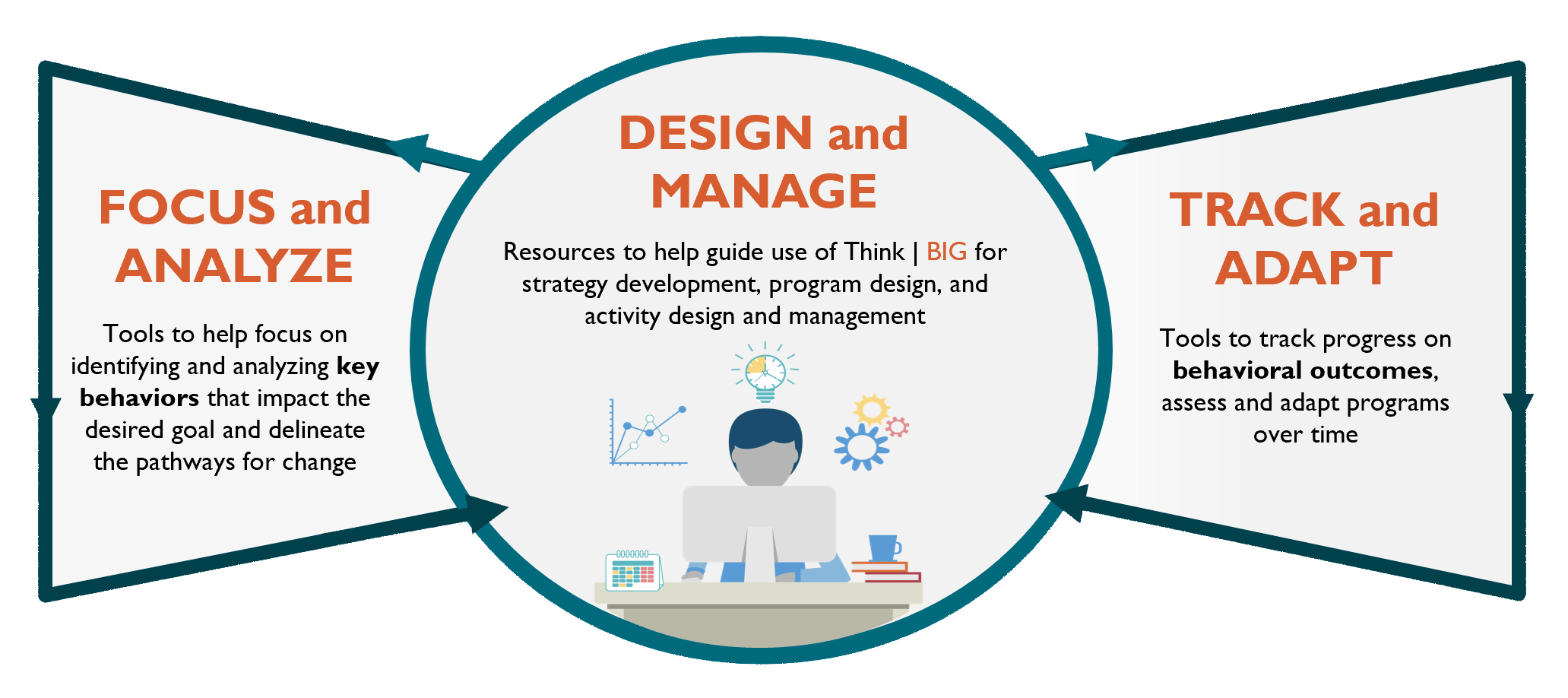Think | BIG
Behavior Integration Guidance
Solving health and development challenges ultimately requires people to do something differently than they’re doing today.
Behavior Integration is a framework that centers people and their behaviors in every phase of program design and implementation.
Think | BIG follows a three-phased approach:
INSIGHT: Define pathways to change using behavior analysis.
ACTION: Influence pathways to change by implementing a behavior-led strategy.
CHANGE: Track success along pathways to change by measuring behavioral outcomes.
Click on each phase tab to learn more about the individual phases.

The first two steps of the behavior integration process (Define and Analyze) explore the goal (or challenge), key behaviors and influencing factors, and develops insights so that you can start to map change pathways.
To help you with the Insight phase we have tools, like:
In the second phase of behavior integration, you will design and implement your program activities, ensuring they are aligned with the program's behavioral outcomes.
To guide you during the Action phase we have tools, such as:
The third phase of behavior integration will help you track and adapt your program activities to ensure you are on the path to achieving your goal.
To support you during the Change phase we have several visual tools, like:


 The Manoff Group was acquired by JSI in 2022.
The Manoff Group was acquired by JSI in 2022.